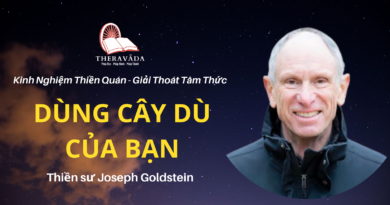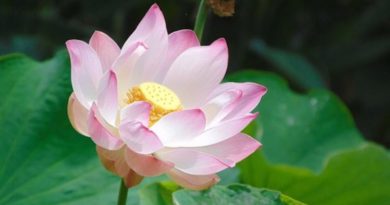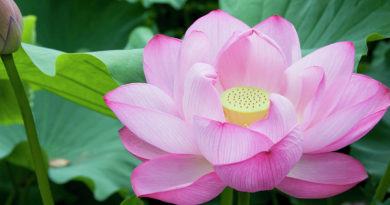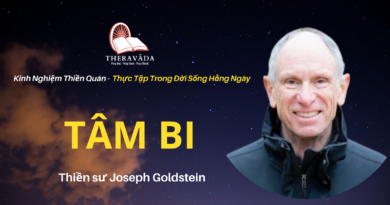A DISCOURSE ON MALUKYAPUTTA SUTTA – INTRODUCTION
A DISCOURSE ON MALUKYAPUTTA SUTTA – INTRODUCTION
Malukyaputta Sutta supplies us with the fundamental knowledge about the principles and practice of Vipassana, insight-meditation. It has been incorporated in the Pali Canon as Samyutta Nikaya, and the twenty-four stanzas given in it can also be found in Visati Nipata of Thera Gatha. It was preached by Buddha at the request of bhikkhu Malukyaputta, the son of a female devotee by the name of Malukya, or Malunkya, if we go according to the Ceylonese texts. His request is in the following words.
“Sadhu me bhante bhagava samkhittena dhamman detesu. Yamaham bhagavato dhammam sutva e ko vnpakattho appamatto atapi pahitatto vihareyam.”
“Reverend Sir! I stand to be benefited by your preaching of the Dhamma in brief. Having heard its essence I will abide in it in solitude, practising it with vigilance, right exertion and singleness of purpose.”
In effect Malukyaputta was asking the Blessed One to prescribe for him succinctly any of the subjects of meditation, //kammatthana//, as he was bent on practising it in the right way in a quiet place. Solitude is very essential for meditation, for it rewards one with //samadhi//, power of concentration, which may be disturbed if one lives in the company with others. But when one can hardly hope to get it, one should mind one’s own business while others theirs. Under such circumstances it will do well for one if one does not speak to them or even look at what others are doing, fixing the mind on the dhamma.
APPAMATTO
In the Text the word //appamatto// occurs. It means “vigilant”. This is also very important. Yogis who meditate in this Yeiktha may be ordinarily held to be vigilant, never forgetting for a moment that they are striving after the realization of the dhamma. When they see an object they note it with vigilance. When they hear, when they smell, when they taste, when they touch or when they think, they are always mindful of hearing, smelling, tasting, touching or thinking. Their slightest behaviour or movement never goes unnoticed or unobserved. They keep their minds alert, never allowing forgetfulness to get the better of them.
ATAPI
The Text also mentions //atapi// the root meaning of which is to heat up. When one is fired with enthusiasm, //atapi// may be said to be at work feverishly. Heat causes the evaporation of water or moisture. Enthusiasm causes the evaporation of all //kilesas//, a collective term for all kinds of defilements. No flies can hover around a piece of hot iron. Defilements may be compared to flies and enthusiasm to red-hot iron. Where enthusiasm is wanting, defilements gain entry into the inner self via the six sense-doors and torment ordinary folks who fail to note the phenomena of arising and passing away of all conditioned things. Defilements have no place for a meditating yogi. In the scriptures wetness is attributed to //kilesa//. When meditational exertions take place with the utmost zeal and enthusiasm, it disappears leaving one’s mind absolutely dry and clean.
FOUR RIGHT EXERTIONS
There are four categories of right exertion called //sammappadhana//.
(1) Firstly, there is exertion to prevent unwholesome actions that have not arisen from arising. Its application is for the purpose of preventive action comparable to that taken by medical and health personnel in their campaigns against contagious diseases. As you are wont to encounter evil in your everyday life, you must be wary of contact with it and take especial care to prevent yourself from being contaminated by it.
(2) Secondly, there is exertion to prevent unwholesome actions that have already arisen from arising again. This is to deter evil from recurring. Besides, we must exert ourselves to have nothing to do with //anusayas// or inclinations towards //kilesa//, for, even though you can avoid evil for the moment, if you still have predispositions to it, you may be overpowered by it in the long run. The act of seeing or hearing prompts the arising of inclinations for sense-objects and such inclinations are known as //arammananusayas//, which are the root causes of //kilesa//. With the meditating yogi they are incompatible. When he treads the Path all prototypes of //kilesa// called //santananusaya// that infest the inner self cease altogether.
(3) Thirdly there is exertion for the accomplishment of wholesome actions which have not yet been taken up. If you have not done good as yet do it now. //Kusala dhammas//, good deeds, must be acquired through the practice of charitableness, morality and mental culture. I urge you especially to practise insight-meditation if you have not as yet done it. If you are doing it with a mind to vipassana nana, insight-knowledge, continue doing it till the Path is attained.
(4) Lastly there is exertion for the development of accumulated wholesome actions till the Path is trodden. Usually a yogi is accomplished in all these four kinds of exertions to safeguard himself from committing evil, avoiding the recurrence of it, acquiring merit where he has not yet acquired it and developing it when it has been acquired.
PAHITATTO
Old writers usually render the word, //pahitatto//, as “with a mind despatched to Nibbana.” Taking it in its literal sense, some would like to put forward the proposition that there is no need for a yogi to practise the dhamma once he has despatched his mind to the concept of Nibbana. This is contrary to the tenets of Buddhist teaching expounded in the Texts. What the word connotes is exertion in the practice regardless of life and limb in the effort, fixing the mind on the Path, the Fruition and Nibbana. This agrees with the commentaries on Silakkhandha Sutta regarding the subject of mental culture.
BUDDHA’S ADMONITION
Buddha acceded to Malukyaputta’s request saying:
“How now, Malukyaputta! What shall I say to other bhikkhus when you are thus making this request? You are old; you have gone far advanced in age; you have reached the last half of the span of human life. Even so you ask for a gist of the dhamma as my admonition!”
Buddha’s words can both mean reproach and approbation. The old monk had not striven for the dhamma while young. Only when he was one foot in the grave he spoke of abiding in it. If Buddha’s admonition were to be taken in that light, Malukyaputta may be held to have been censored.
But here is Malukyaputta to lead the life of a recluse in search of truth in spite of his senility. What would young Bhikkhus say to it? They would certainly emulate him. In this context it may be interpreted that Buddha was full of praise for him. Today if a young man encounters old men and women striving strenuously for the realization of the dhamma he should follow in their footsteps.
As Malukyaputta repeatedly made the request, the Blessed One preached him the fundamentals of the practice of insight meditation by posing a series of questions which, when answered, could reveal the method relating to vipassana.









